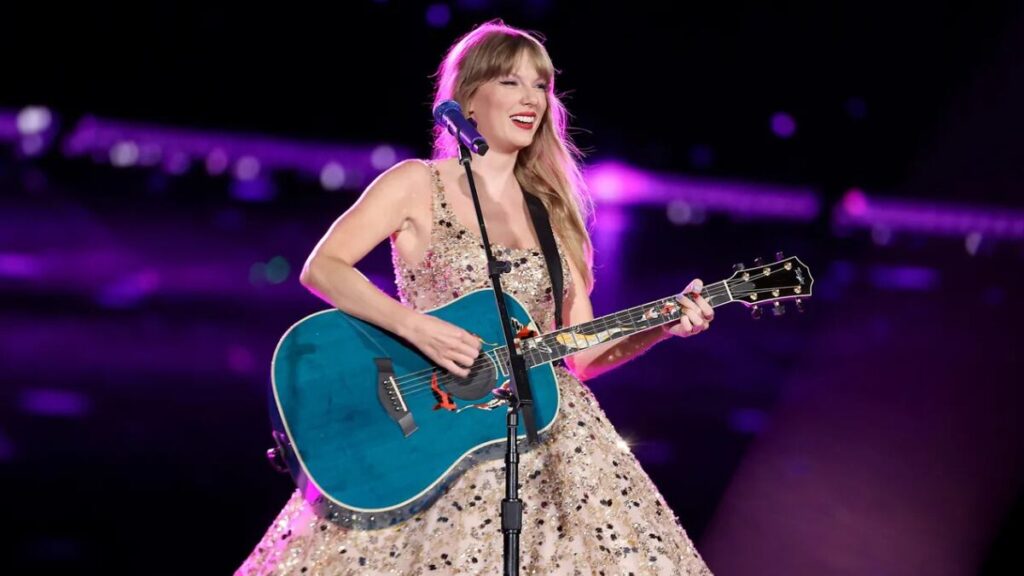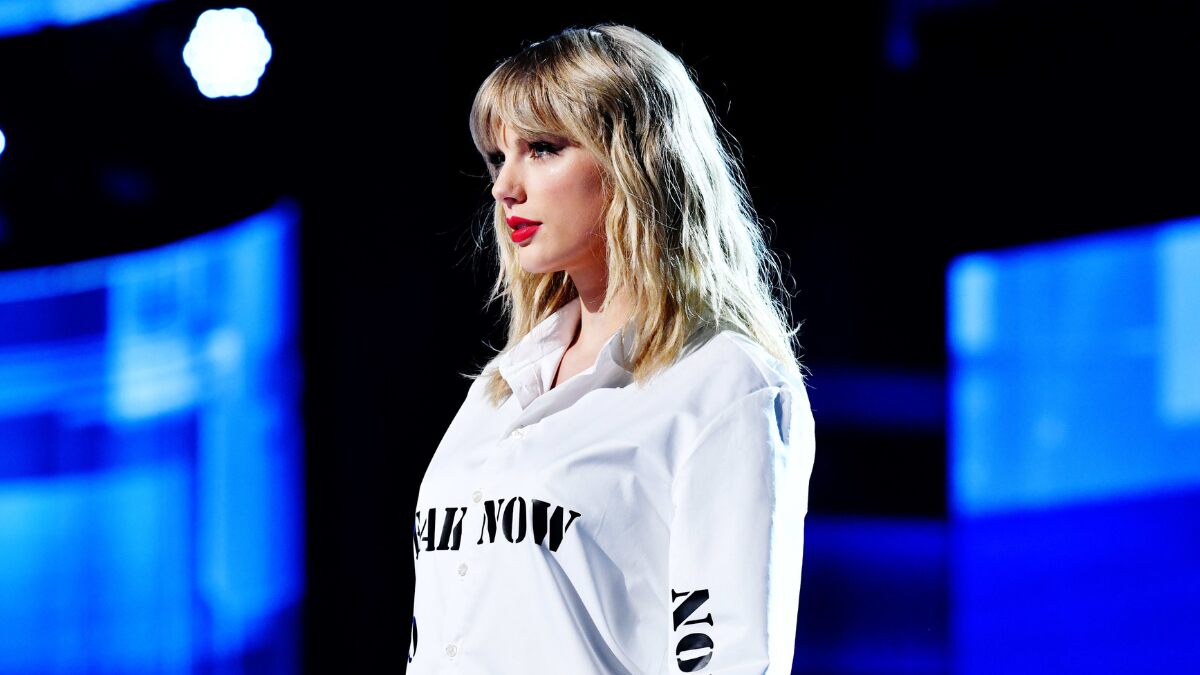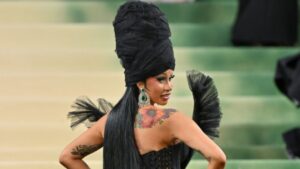Taylor Swift has evolved far beyond the title of singer-songwriter. Today, she represents a living, breathing brand ecosystem—one that fuses music, fashion, storytelling, and economics into a single cultural force. Her influence doesn’t stop at the edge of a stadium stage; it ripples through high fashion, surging vinyl sales, city tourism booms, and even political discourse. In the process, Swift has redefined what it means to be a modern celebrity entrepreneur.
At the heart of this transformation are three interconnected pillars: the Eras that turn each album into a self-contained universe, the merchandise that fans treat as artifacts of belonging, and the fan culture that transforms passive listeners into active participants in her brand. Together, they create what economists now call a “celebrity economy,” where cultural capital translates directly into financial power.
What happens when music becomes an economy of its own? Swift’s journey provides the most compelling answer yet. Her brand power shows that in the 21st century, cultural influence is no longer just about topping the charts—it’s about building an empire that thrives on reinvention, ownership, and community.
How did Taylor Swift turn her Eras into a brand empire?
When Taylor Swift announced The Eras Tour, she wasn’t just selling concert tickets—she was unveiling a masterclass in album branding. Each “Era” represents more than a musical period; it’s a fully realized mini-brand, complete with its own aesthetics, storylines, and cultural touchstones. From the pastel dreaminess of Lover to the folklore-inspired intimacy of Evermore, Swift turns music into product design, where sound, visuals, and narrative form a cohesive identity that fans can buy into.
This strategy creates cultural continuity. Rather than moving from one album to the next in isolation, Swift reinvents herself in cycles, each one feeding into the anticipation of what comes after. Fans aren’t just listening; they’re living inside these worlds, adopting fashion cues, decoding Easter eggs, and collecting merchandise as if it were cultural currency.
By framing her career in distinct chapters, Swift offers audiences lifestyle markers they can personally identify with. The Eras concept doesn’t just build anticipation—it creates loyalty, ensuring that every reinvention feels both fresh and deeply connected to her larger story. It’s this blend of identity reinvention, fan participation, and narrative control that has transformed the “Eras” into a brand empire unlike anything in music history.
Why is the Eras Tour considered a cultural and economic phenomenon?
The Eras Tour has become more than a concert series—it’s a global cultural event and an economic engine. On the cultural side, fans arrive in handcrafted costumes, exchange friendship bracelets like souvenirs of belonging, and transform stadiums into kaleidoscopes of collective ritual. The sense of community is as vital as the music itself, reinforcing Swift’s role as a cultural architect.
Economically, the tour’s impact rivals major sporting events. Analysts estimate it has generated billions in consumer spending, with local GDP boosts as hotels sell out, restaurants overflow, and even airlines report surges tied to tour dates. Some cities likened the effect to hosting the Super Bowl, while others compared it to Beyoncé’s Renaissance Tour in scale and influence.
The Eras Tour proves the power of live music impact—where Swiftie spending not only sustains a brand but leaves measurable imprints on entire economies.
How much revenue did Taylor Swift make from Eras Tour merchandise?
Merchandise has become one of the most lucrative pillars of the Eras Tour economy. Industry estimates suggest Swift earns between $3–$4 million in merch sales per show, adding up to more than $200 million in 2023 alone. Fans line up hours before stadium gates open, sometimes even on non-concert days when merch trucks are parked outside, eager to secure exclusive tour apparel and collectibles.
The appeal isn’t just about owning a T-shirt—it’s about claiming a piece of the cultural moment. Limited drops and unique designs tied to specific Eras create a sense of scarcity, making items both emotionally valuable and highly sought after in the resale market. Online platforms show Swift gear reselling for multiples of its original price, underscoring the demand.
This blend of exclusive merch strategy, fan purchasing behavior, and cultural attachment turns what might seem like “concert souvenirs” into powerful revenue streams—and a central piece of Swift’s brand economy.
How do Swifties fuel Taylor Swift’s global commercial impact?
At the core of Taylor Swift’s empire are the Swifties—a fan community that functions less like an audience and more like a consumer tribe. Their loyalty extends far beyond ticket sales. Fans travel across states or even continents to attend shows, often buying multiple tickets to experience different Eras Tour stops. Along the way, they flood local economies with spending on hotels, flights, restaurants, and themed outfits, turning every concert into a multi-day cultural event.
But Swifties’ influence isn’t measured only in dollars. They generate endless user-made content—TikToks, memes, concert breakdowns—that keep Swift’s name trending between album cycles. They create rituals like trading friendship bracelets and decoding Easter eggs, reinforcing a participatory culture where the brand is continuously alive.
This fan economy transforms listeners into co-builders of Swift’s commercial power. As one fan put it, “It’s not just supporting her—it’s being part of her story.” That emotional investment sustains demand, amplifies sales, and ensures Swift’s influence resonates worldwide, long after the lights go down.
How did re-recordings boost Taylor Swift’s brand and earnings?
When Taylor Swift announced she would re-record her early albums, it was framed as an act of defiance—but it quickly became a masterstroke in brand building. Rather than accept defeat in the battle over her masters ownership, Swift flipped the music industry script. Taylor’s Version releases weren’t just re-recordings; they became cultural events, fan-led campaigns, and powerful reminders of the importance of artists’ rights.
Each re-recorded album shot to the top of the charts, proving that loyalty could override nostalgia for the originals. Fans eagerly streamed and purchased the new versions, effectively transferring catalog control back to Swift while diminishing the value of the old masters. Beyond the financial upside, the move deepened her reputation as a savvy businesswoman and industry disruptor.
In doing so, Swift turned a legal and contractual setback into a narrative of empowerment. Her re-recordings illustrate how authenticity, fan solidarity, and strategic ownership can transform a dispute into a multibillion-dollar win—and elevate an artist’s brand far beyond music sales alone.
How did Taylor Swift regain control over her masters—and why?
In the music industry, owning your masters—the original recordings of your songs—means controlling how they are used, licensed, and monetized. When Taylor Swift’s early catalog was sold to talent manager Scooter Braun without her consent, it sparked one of the most publicized master’s disputes in modern music. The sale stripped her of music industry control over the intellectual property she had created, igniting a debate about artists’ rights.
Swift’s response was both strategic and symbolic: she began re-recording her albums as Taylor’s Version. By encouraging fans to support these new releases, she effectively reclaimed her catalog control while devaluing the original masters. This bold move reshaped conversations about intellectual property in music, positioning Swift not just as an artist but as a pioneer for fairness and ownership in an industry where many performers lack such leverage.
What is “Swiftynomics” and why does it matter?
“Swiftynomics” has become shorthand for one of the most fascinating cultural and financial case studies of our time. Think of it as a hybrid discipline—part economics, part sociology—explaining how Taylor Swift’s brand generates both dollars and devotion. At its core, the Swift economy thrives on more than ticket sales; it’s built on emotional loyalty that drives fans to buy vinyl variants, themed outfits, concert merch, and even travel packages.
Observers joke it’s “GDP: Girl-Driven Power,” but the numbers are no punchline. Analysts credit Swift’s tours and releases with boosting local economies, sustaining the vinyl revival, and redefining music brand economics. The cultural impact of Taylor Swift is so profound that policymakers and business leaders now cite her as a model for consumer-driven growth. In short, Swiftynomics matters because it shows how cultural capital can be converted into tangible, lasting economic influence.
What makes Taylor Swift’s merch strategy unique?
Taylor Swift’s merchandise isn’t simply about selling T-shirts—it’s about storytelling through products. Each drop is tied to an Era, with designs that echo the aesthetics and narratives of her albums. A pastel hoodie isn’t just fabric; it’s a wearable piece of Lover. A folklore cardigan isn’t just cozy—it’s a symbol of belonging to an intimate chapter of Swift’s universe.
Her strategy leans on exclusivity and personalization. Limited runs, seasonal drops, and even surprise Easter eggs woven into product design create urgency and emotional value. Fans trade friendship bracelets inspired by her lyrics, turning a DIY craft into a global ritual of connection. In this way, merch becomes more than exclusive collectibles—it functions as identity expression and community bonding.
By framing products as cultural artifacts rather than generic souvenirs, Swift has elevated concert merch into a pillar of her brand economy, proving that storytelling can sell just as powerfully as sound.
How has Taylor Swift influenced independent retailers and the vinyl revival?
Taylor Swift has become a surprising engine behind the vinyl sales boom. Her decision to release multiple vinyl variants—often with exclusive artwork, colors, or bonus tracks—has turned albums into collectibles, driving demand far beyond standard music consumption. Fans chase these editions the way sneakerheads hunt limited drops, fueling a surge in pre-orders and sellouts.
This vinyl strategy hasn’t just boosted her own numbers—it has revitalized independent record shops. Swift frequently aligns with Record Store Day and small retailers, ensuring her releases draw traffic to local businesses. Pressing plants, once struggling in a digital-first era, have expanded capacity to keep up with Swift-driven demand.
In effect, Swift has helped transform vinyl from a niche format into a cultural event. Her influence demonstrates how a single artist’s brand power can spark an indie record store revival while reshaping the economics of physical music in the streaming age.
What role do Easter eggs play in her fan economy?
In Taylor Swift’s world, nothing is accidental—and fans know it. From Instagram captions to music video props, Swift plants breadcrumbs that spark wild speculation. These Taylor Swift Easter eggs have become more than clever marketing; they’re a cornerstone of her fan engagement tactics. Every cryptic hint invites decoding parties on TikTok and Reddit, keeping the conversation alive long after an album drops.
This scavenger-hunt culture fuels her fan economy. Fans don’t just consume her work passively—they interact with it like a puzzle, generating endless viral content and deepening their emotional investment. The thrill of discovery makes each reveal feel like a personal victory, binding the community closer together. In the process, Easter eggs transform promotion into play, proving that mystery can be as powerful a driver of loyalty as music itself.
How does Taylor Swift compare with other celebrity brands?
In the crowded landscape of cultural moguls, Taylor Swift stands out not only for scale but for strategy. A celebrity brand comparison with peers like Beyoncé, Drake, BTS, and Rihanna reveals both overlaps and striking differences. Like Beyoncé’s Renaissance Tour, Swift’s Eras Tour functions as a global spectacle, moving billions through ticketing, merch, and tourism. Drake, through OVO, has built a brand ecosystem mixing music, fashion, and real estate—parallels to Swift’s multi-pronged empire. BTS, with their ARMY, demonstrate the same fan-powered intensity that fuels Swift’s own economy. And Rihanna’s Fenty shows how diversification can turn a celebrity into a billion-dollar industry.
What sets Swift apart is her unique fusion of storytelling and ownership. The Eras framework rebrands each album as a lifestyle chapter, while her re-recordings highlight catalog control and artists’ rights. Add in the decoding culture—where fans hunt for Easter eggs like scholars of her mythology—and Swift’s brand becomes more participatory than most.
Measured not just in net worth but in cultural continuity, Taylor Swift has built what may be the world’s most valuable music brand—one that thrives on reinvention, fan partnership, and a business model as creative as her art.
What partnerships have strengthened her music brand?
Taylor Swift’s approach to collaborations shows the same intentionality as her music. Rather than scattershot endorsements, she aligns with brands that feel like natural extensions of her narrative. Her long-running partnership with Target turned album launches into retail events, complete with exclusive editions that fueled collector demand. With Capital One, she blended mainstream visibility with playful ad campaigns, reinforcing her accessibility while expanding financial brand partnerships.

Perhaps most telling was her collaboration with Stella McCartney during the Lover Era—a fashion partnership that doubled as a storytelling extension, translating her pastel aesthetic into wearable art. Each of these music brand collaborations is less about logos on posters and more about strategic endorsements that complement her identity. By choosing partners that mirror her artistry, Swift strengthens her brand power without diluting authenticity—proof that synergy, not saturation, is the secret to enduring influence.
What building Taylor’s brand has taught me about authenticity
The first time I walked into an Eras Tour stadium, I expected a concert. What I found felt more like stepping into a living museum of Taylor Swift’s career—tens of thousands of people dressed in sequins, cardigans, and handmade bracelets, each signaling the Era that spoke to them most. I traded a bracelet with a stranger in the merch line, and in that moment,I realized the secret of her brand: authenticity doesn’t come from perfection, it comes from participation.
As a fan, I’ve bought vinyls, streamed Taylor’s Version re-recordings, and even stood in lines just to snag a piece of exclusive merch. None of it felt transactional. It felt like being part of a story bigger than myself. That’s the lesson in authenticity in branding—when consumers believe they’re co-authors, not just customers, loyalty deepens into identity.
My personal experience with Taylor Swift showed me that authenticity isn’t just a marketing buzzword. It’s what happens when storytelling, ownership, and community align so seamlessly that supporting the brand feels like supporting yourself. That’s why her empire endures—and why authenticity remains the rarest, most valuable commodity in culture today.
How does Taylor Swift’s brand power boost tourism and local businesses?
When Taylor Swift’s Eras Tour arrives in a city, the ripple effect is immediate. Hotels book out months in advance, restaurants create Swift-themed menus, and boutiques stock sequined outfits for fans eager to dress the part. In Chicago, local tourism boards reported record spikes, while in Cincinnati, Swift’s shows brought an estimated $90 million boost to the regional economy.
Beyond the headline numbers, small businesses feel the lift too. Bars rename cocktails after songs, nail salons offer “Eras” palettes, and ride-share demand surges. Fans traveling across states—and sometimes countries—turn each stop into a multi-day celebration.
This phenomenon has been dubbed the “Taylor Swift tourism effect,” where fan travel spending doesn’t just fuel the concert city economy but temporarily transforms entire urban landscapes into extensions of her brand.
Taylor Swift as Blueprint for a Cultural & Financial Mogul
Taylor Swift’s career is no longer defined solely by chart-topping hits—it’s a case study in the modern celebrity wealth strategy. Through the deliberate reinvention of her Eras, the empowerment of fan communities, and the reclaiming of her masters, Swift has built a music brand blueprint that balances cultural storytelling with financial mastery. Her legacy demonstrates that authenticity and ownership are not just ideals, but also competitive advantages.
What distinguishes Swift’s empire is its longevity. Each cycle renews her cultural capital, while fan-driven rituals ensure the brand never fades between albums. From fueling local economies to reshaping artist rights, she has shown that music can generate not only art but infrastructure.
In the 21st century, music brands don’t just sell songs—they build economies. And Taylor Swift’s legacy may well be remembered as the definitive blueprint for future cultural and financial moguls.
Nishant Wagh is the founder of The Graval and a seasoned SEO and content strategist with over 15 years of experience. He writes with a focus on digital influence, authority, and long-term search visibility.














